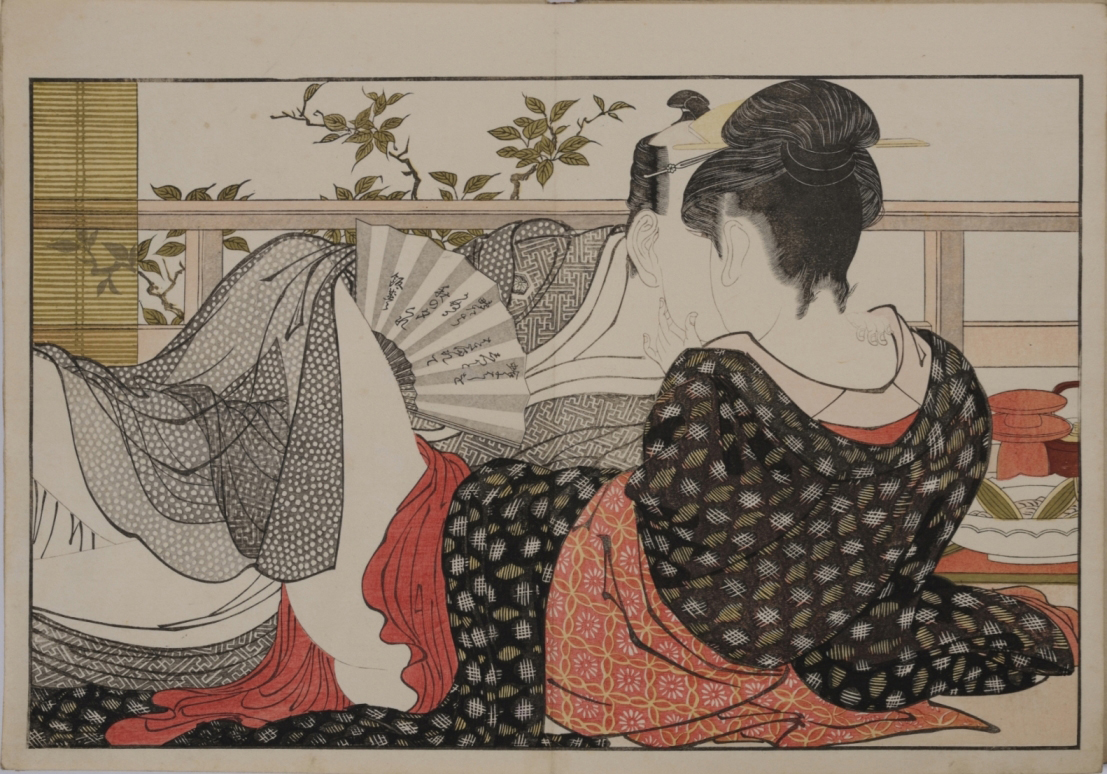Japan's first major shunga (literally, "spring pictures") exhibition of erotic paintings and woodblock prints, is surprisingly hard work. As a venue for a ground-breaking assembly of images, which probably would not have been shown publicly if it were not for a highly successful shunga exhibition at the British Museum that opened in 2013, the relatively small space of the Eisei Bunko Museum has been seriously packed with visitors, making it tough to get a good look at the exhibits.
By "good look," I don't necessarily mean a sexually satisfying, lascivious, voyeuristic gawp, but a reasonable length of time in which to consider the complexity of many of the images. Japanese erotic prints have also been called makura (pillow), nure (wet) and warai-e (laughter pictures) and, depending on the artist, era and audience, they can be intentionally artistic, instructional and/or comic. To call them pornographic, considering that, by definition, they revolve around sex, has not been as easy as one might suppose.
The British scholar Timon Screech caused a splash in the late 1990s by suggesting that they could be called "pictures to be held in one hand," cutting through a history of elliptical discussion, by older heterosexual male academics that focused on the aesthetics and intertextuality of images in which just about every conceivable variation of bumping uglies can be seen.

















With your current subscription plan you can comment on stories. However, before writing your first comment, please create a display name in the Profile section of your subscriber account page.